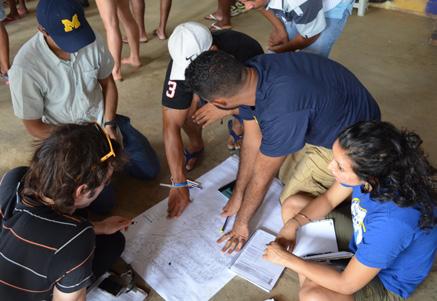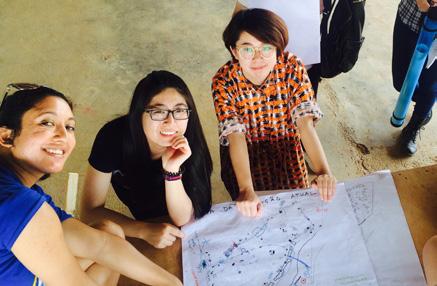
1 minute read
Findings and Recommendations
with community members who volunteered to participate. Translators assisted in this activity, making conversations possible. Community members were also welcome to draw directly on the maps to better indicate where they experience problems or find solutions.
After the community meeting, Taubman College Team joined the Ocupação Anchieta Association coordinators for lunch at a restaurant nearby. This lunch was an opportunity to continue conversations about future plans and also to showcase prototypes and other visions.
FINDINGS AND RECOMMENDATIONS
Overall, conversations and activities revealed much information about the following five priority area themes: waste management, housing, infrastructure, creeks and springs, and cultural and social spaces. Furthermore, residents also discussed recycling and outdoor lighting. However, there were some missed opportunities to gain feedback.
Many maps were not intended to be used for interactive activities and lacked the orientation tools necessary to receive feedback from many residents. Useful orientation tools could have included photos of well-known landmarks on the map to help residents position their locations. Without these tools, it was difficult for the students and residents to identify where in the community certain problems do or do not occur. The amount of community members in attendance also greatly outnumbered the students and translators that were available. The language barrier between the students and residents, and only having four translators made it difficult to receive feedback from all the residents that were willing to engage.
76 (left) Mapping Exercise at Community Meeting. 79 (left) Students and Community Members Help Locate Existing Streets.
77 Mapping Exercise at Community Meeting
78 Students Mapping Trash Sites








